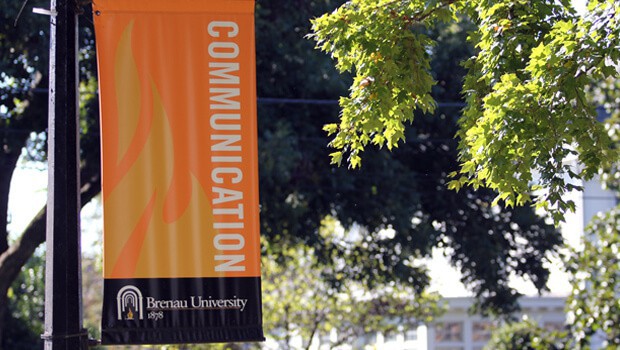The Communications Legacy
The verb “to communicate” over the centuries evolved in its most dominant use to mean something a bit one-sided: to impart information. However, trace its roots to the original Latin and the meaning clearly is “to share,” which is more than a strong indication that communication is a two-way street.
Certainly that etymology fits with the definition the university’s academic leaders envisioned when it declared “Communications” to be one of the four portals of liberal arts learning around which all Brenau curriculum would revolve along with global understanding, appreciation for the arts, scientific and social curiosity.
Indeed, the communication portal at Brenau embraces not only some of the basic skills of communication, such as writing and speaking, but also technological tools for communicating and the nuance of languages, lifestyles, cultural differences, emotion and all the other elements that combined shape communication into a shared experience.
Moreover, communication – by Brenau’s broad definition – becomes something of a first-among-equals endeavor because it is such an essential part of the other three portals. What is art if not communication? How can we achieve a broad world view without communication between peoples? How can curiosity-based research even commence, let alone progress and create some meaningful impact without communication?
This issue of Brenau Window takes a more detailed look at how communication has impacted individuals’ lives and the institution itself. The articles touch a variety of seemingly unconnected stories, but the common, underlying thread is communication. The stories of a 15-year-old Women’s College student who has taught herself to sign so she can communicate with hearing-impaired people, the nursing alumna who has channeled her own grief into helping teach students how to help their future patients cope with tragedy, and the North Georgia mountains Women’s College graduate who samples Chinese language instruction at the university all underscore the point that Brenau places, as it always has, a premium on the art and science of communication.
And as an exclamation point for the beginning of that statement, you will read about a communications legacy of another kind: one that will ensure future generations of Brenau students will receive the highest quality communication education and experience possible in the ever-changing world of the media.
You will find “communications stories” throughout this issue of Brenau Window. You will find additional materials, including a developing catalog of Brenau alumni and Brenau family members, who work or have worked in communications. To illustrate the point we’re making about two-way communications, this is a section that can easily involve you if you provide information about yourself or someone you know. In fact, the entire format of this magazine facilitates you as a communicator. You can provide feedback and footnotes to articles to make them more thorough and enjoyable for other readers. You can re-publish them to your Facebook page or Tweet about them by using some of the automatic links that are built in. And you can learn along with us as we all explore better ways to communicate.
– David Morrison

